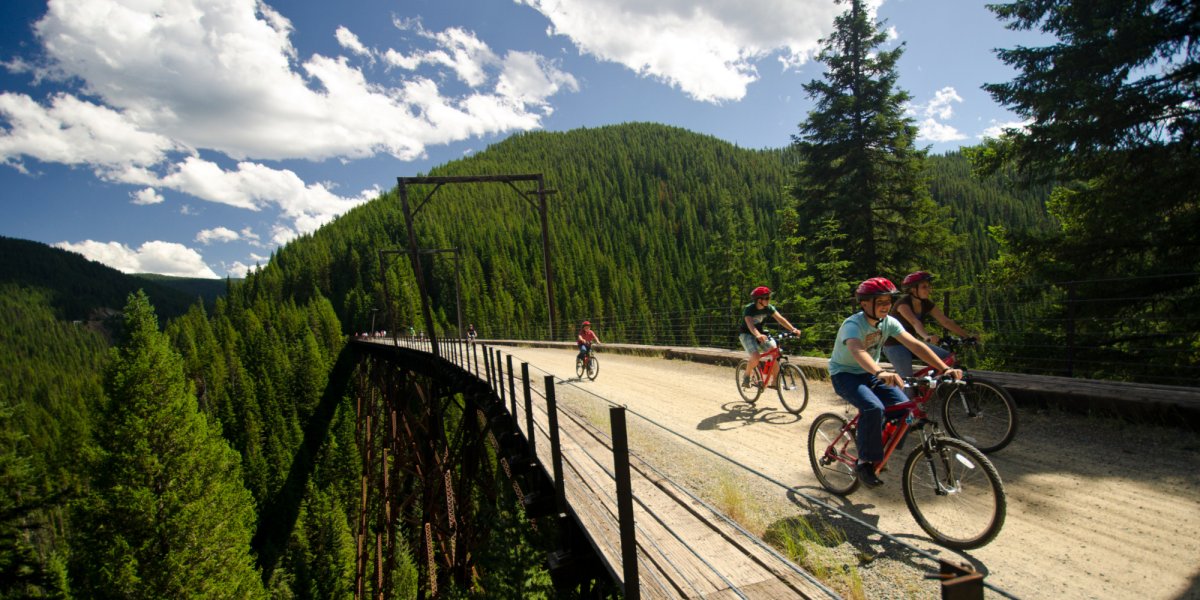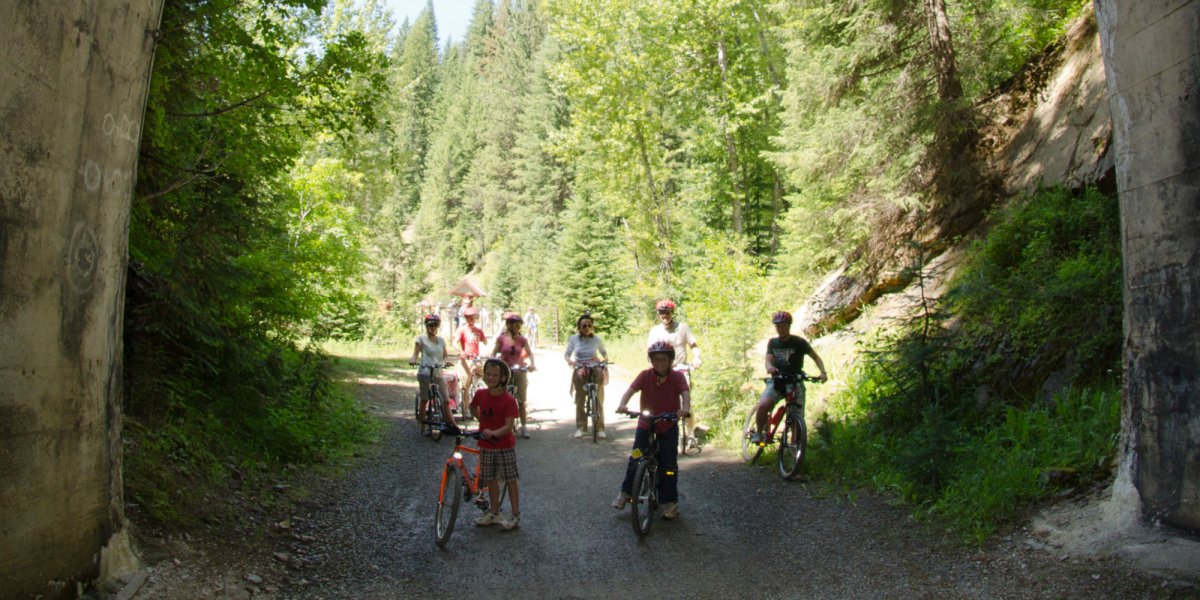A Brief History of the Route of the Hiawatha
Rails-to-trails riding has given a new lease on life to several former railroad routes that played an influential role in the history of the United States. Once integral to the transport of passengers and goods across the country, they fell into decline as new modes of transportation evolved. Today, the Rails-to-Trails Conservancy is on a mission to transform these abandoned routes into recreational hubs, connecting communities and offering access to spectacular natural scenery.
One of the United States’ most popular rails-to-trail projects is the Route of the Hiawatha, which takes in 15 miles of former railroad track (along with its 10 tunnels and 7 trestle bridges) along the border between Montana and Idaho. With its gently descending gravel path, it’s ideal for all ages and best enjoyed as part of a rails-to-trails cycling tour.
In fact, the Route of the Hiawatha is so beloved that it has been recognized by the Rail-Trail Hall of Fame for its scenic value, historical significance, and rider-friendly amenities. Aside from its sweeping valley views across both states, a bike tour on the Route of the Hiawatha is an opportunity to immerse yourself in the nation’s industrial history.
The Route of the Hiawatha begins with a ride through the 1.6-mile-long St. Paul Pass Tunnel, which follows the crest of the Bitterroot Mountains near the Lookout Pass Ski Area. Completed in 1908, the tunnel now forms part of the Chicago, Milwaukee, St. Paul, and Pacific Railroad Company Historic District and is symbolic of the area’s fascinating past.

A Tumultuous 70-Year Journey
Also known as the “Milwaukee Road”, the Chicago, Milwaukee, St. Paul and Pacific Railroad was the last transcontinental route to be completed in the early 20th century. Originally planned to connect Milwaukee and Waukesha, its network expanded across more than 10,500 miles and around a dozen states, eventually connecting Chicago with the Pacific Northwest.
The section that would become known as the Route of the Hiawatha was surveyed in 1904 and completed in 1906, which was impressive considering the challenging terrain. The Winston Brothers Company was responsible for building much of the line, including the iconic St. Paul Pass Tunnel. Construction camps and settlements began springing up along the route, including Avery and Marble Creek, although many were destroyed during a devastating forest fire in 1910.
In the same year, the Puget Sound Extension opened to passengers and four years later, the line was electrified. It was the first time it had been done across such an extensive distance and it brought the cost of building the railroad to more than $250 million (only $215 million over its initial estimate!)
Unfortunately, the company was forced into bankruptcy, only to reemerge in 1927 as the Chicago, Milwaukee, St. Paul and Pacific Railroad. As the demand for freight services increased in the 1950s and 1960s, the route finally became profitable. This was short-lived, however, with electrified operations shutting down in 1974 as diesel engines took over and many freighters began finding alternative ways to get their goods where they needed to be. Once again, the company fell into bankruptcy, and more than 1,000 miles of track west of Terry, Montana was abandoned.
A New Lease on Life
More than two decades later, the abandoned railroad was given a new lease on life as the Route of the Hiawatha, which opened to the public as a rail trail in May of 1998. In 2001, the St. Paul Pass Tunnel was also reopened to walkers and cyclists, enabling everyone to once again appreciate this feat of engineering.
The Route of the Hiawatha is accessible from mid-May to mid-September and is open from 8:30 am to 5:00 pm PDT. It’s one of several rails-to-trails routes that can be explored on a multi-day guided tour, offering you a deeper insight into the region’s history and its natural wonders. With high-quality bicycles, trail passes, accommodation, meals, and shuttles to and from the trailheads included, all you have to do is pedal!
Knowledgeable local guides enrich the experience with both historical insights and current perspectives, backed by the natural beauty of Idaho and Montana. Our rails-to-trails biking tours bring like-minded people together to share incredible experiences, with all of the logistics taken care of. We offer both traditional and e-bike tours of the Route of the Hiawatha, as well as the Trail of the Coeur d’Alenes.




